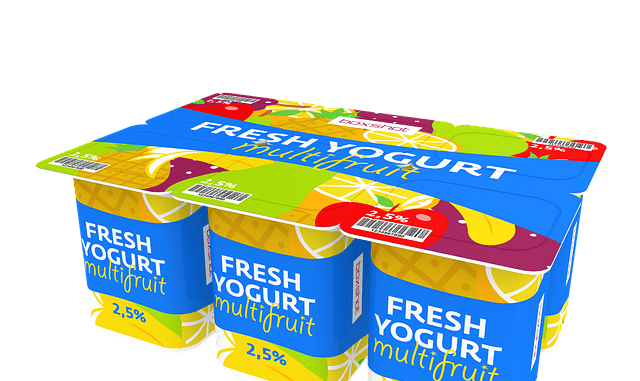
Food packaging which comes into contact with the food itself is covered by two pieces of legislation in the European Union. This is Framework Regulation EC 1935/2004 and one that covered the use of plastics which is known as 10/2011.
Framework regulation EC 1935/2004
This piece of legislation is intended to cover all food packaging materials especially those which comes into contact with food. The food contact materials include active and intelligent materials and articles. It is quite explicit because its sole intention is to protect human health.
The food packaging must not endanger health, it must not produce an unacceptable change in the composition of the food and it must not later cause deterioration in the sensory characteristics of the food. All these packaging materials have to be manufactured in compliance with good manufacturing practice (GMP).
All the food contact materials which includes packaging, kitchen utensils and machines alongside other articles that are used for the manufacturing of food.
It applies to all types of material such as glass, paper & board, plastics, metals, ceramics and so on.
The regulations also cover traceability and labeling, a need for a declaration of compliance and the authorization of new substances. Following the publication of the regulations EC 1935/2004, more specific measures were brought to cover distinct types of packaging material.
The European Regulations for Food Contact Materials.
The specific measure for materials are:-
- Active and intelligent materials (EC/450/2009)
• Regenerated Cellulose film (2007/42/EC)
• Ceramics (84/500/EEC)
• Recycled plastics 282/2008
• As from 1st May 2011: New Legislation on Plastic materials
(EU) 10/2011
There are some specific measures on a variety of substances which cover nitrosamines in rubber and elastomers, the use of vinyl chloride monomer which is part of the new legislation on Plastic materials (EU) 10/2011. It also covers BADGE/BFDGE & NODGE (Epoxy derivatives).
In the absence of any harmonized regulations, the Council of Europe has adopted resolutions that are not binding unless transposed into national laws on paper & Board, printing inks, colours and so on.
Perhaps the one piece of legislation of major impact is the Plastic regulation (EU) 10/2011.
The Plastic regulation (EU) 10/2011
The new regulation came into force on the 1st may 2011 and is also known as Commission Regulation (EU) No. 10/2011. the European commission needed to update and consolidate the regulations relating to plastic in contact with foodstuffs.
One element of the regulation was to repeal rules as of 1st May 2011 on Directive 2002/72/EC and six amendments. This covered general rules, some authorized substances, various restrictions and specifications, and a Declaration of Compliance.
It also covered a directive on the use of vinyl chloride monomers.
The regulation replaces as of 1st January 2013, the Directives on migration testing.
The Directives on migration testing include:-
• Directive 82/711/EEC : Migration testing
• Directive 85/572/EEC : Food Simulants
- Plastics mono-layers
• Plastic multilayer bound by adhesives
• Plastic layers or coatings forming gaskets in caps & closures
• Plastic layers in multi-material multi-layer materials
• All plastics can be coated and/or printed
The Regulations Regarding Vinyl Chloride Monomer (VCM)
One of the elements covered by the regulation (EU) 10/2011 is the Council Directive 78/142. The key element is that the maximum amount of VCM in a material or article that comes into contact with a food must be 1mg/kg in the final contact material product. The VCM cannot be detected in any foodstuff in excess of 0.01 mg/kg.
Regulation (EU) 10/2011 On Plastic Materials And Articles Intended To Come Into Contact With Food
This is a specific measure (Article 2) that cover plastic materials and articles and their parts. The plastics are consisting exclusively of plastic or composed of two or more layers of materials each consisting exclusively of plastic, bound together by adhesives or other means.
In the finished product state, the plastics are intended to come into contact with food and are intended for that purpose.
Plastics Overall Migration Limits (OML)
In regulation (EU) 10/2011, Article 12 covers migration limits for plastic into foods. The amount of constituent of a plastic contact material which is allowed to migrate from the contact material into a food is a standard of 10 mgs per square decimetre of surface area or in the case of materials in contact with infant food of not more than 60 mg/kg released into a food stimulant.
Traceability
Traceability is a general requirement for food materials. It must be ensured at all stages for the control and recall of defective products, consumer information and an attribution of responsibility. Where possible, business must have systems and procedures in place to identify business they supply and receive from.
Likewise, any goods placed on the EU market must be identifiable in such a way that allows their traceability by means of labelling, by documentation and corresponding information.
Enforcement Of Legislation
The Food Standards Agency (FSA) and the District Council Environmental Health Officers (EHOs) have the powers to enforce actions on food producers when it comes to checking compliance with packaging regulations.
Powers Of Authorised Officers
The authorised officers have the right to enter premises to determine if there is compliance with the regulations and that also includes GMP standards. They can also inspect records on site including traceability. They can inspect GMP and associated records and documents associated with Quality Assurance and Quality Control.
No offence is required for the officers to examine the records. They can also take samples of materials and articles intended for use as a food contact material. They can also submit samples to a Public Analyst for chemical analysis.

Leave a Reply